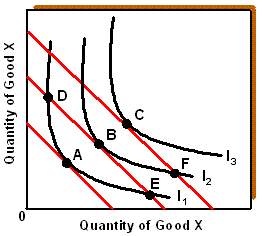The price elasticity of a horizontal demand curve is always
a. infinitely large.
b. zero.
c. one.
d. increasing as price increases.
a
You might also like to view...
What does it mean to say that an individual's preferences are transitive?
What will be an ideal response?
A concentration ratio
a. measures the percentage of total output supplied by the four largest firms in the industry. b. reflects the level of competition in an industry. c. is related to the control that each firm has over price. d. All of the above are correct.
Exhibit 6A-2 Consumer Equilibrium
?

A. the same total utility as point A, but requires a larger budget. B. the same total utility as point A, and point E for the same budget. C. more total utility than point A, but requires a larger budget. D. the same total utility as point B, but requires a smaller budget.
Suppose that in a perfectly competitive market, the market price is $10. A firm in that market has marginal cost of $10, average total cost of $12, and it is producing 100 units. The firm is
A. earning zero total economic profits and is not maximizing economic profits. B. incurring $200 in total economic losses and is minimizing economic losses. C. earning $1,000 in total economic profits and is maximizing economic profits. D. earning $200 in total economic profits and is maximizing economic profits.